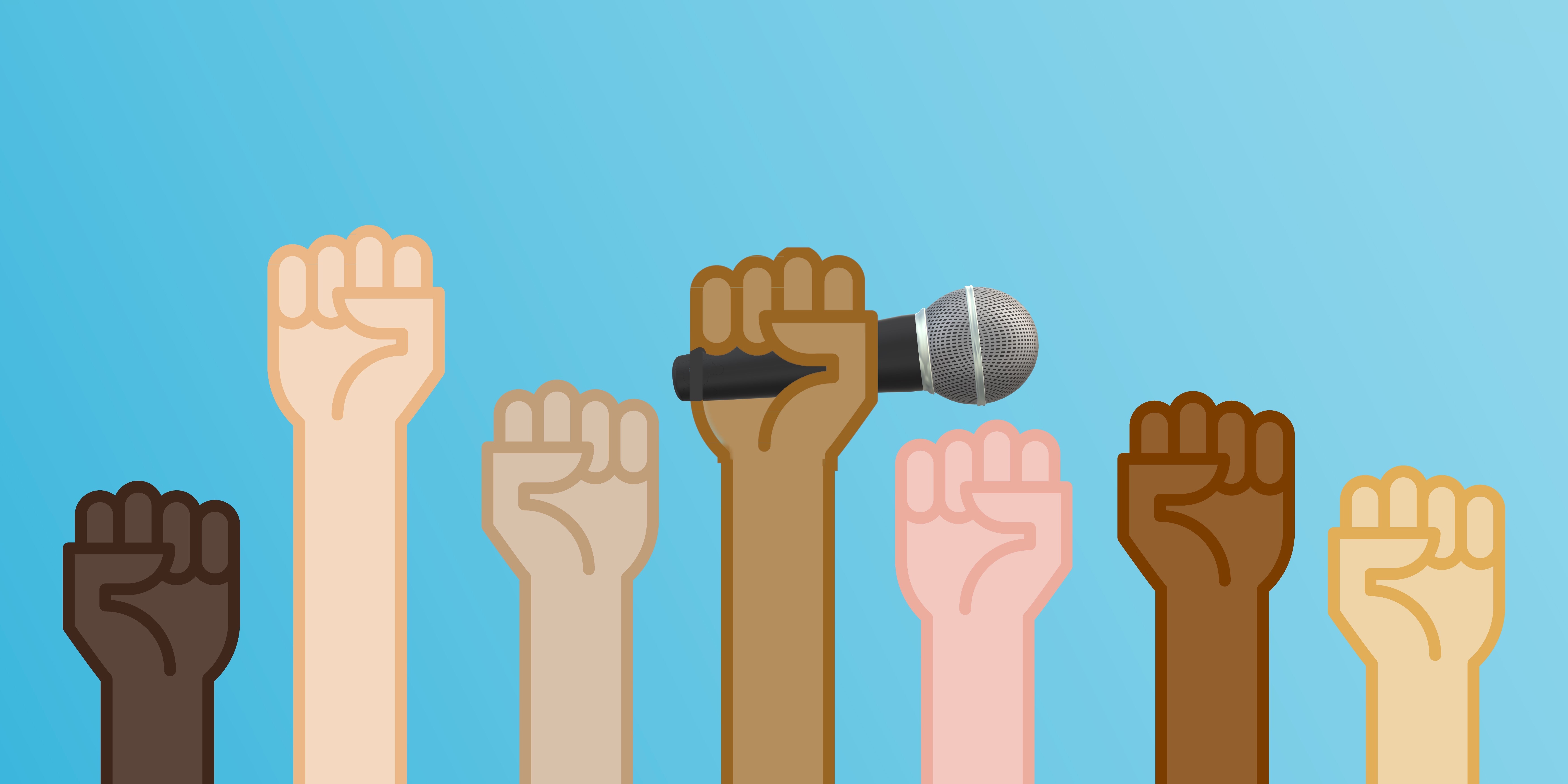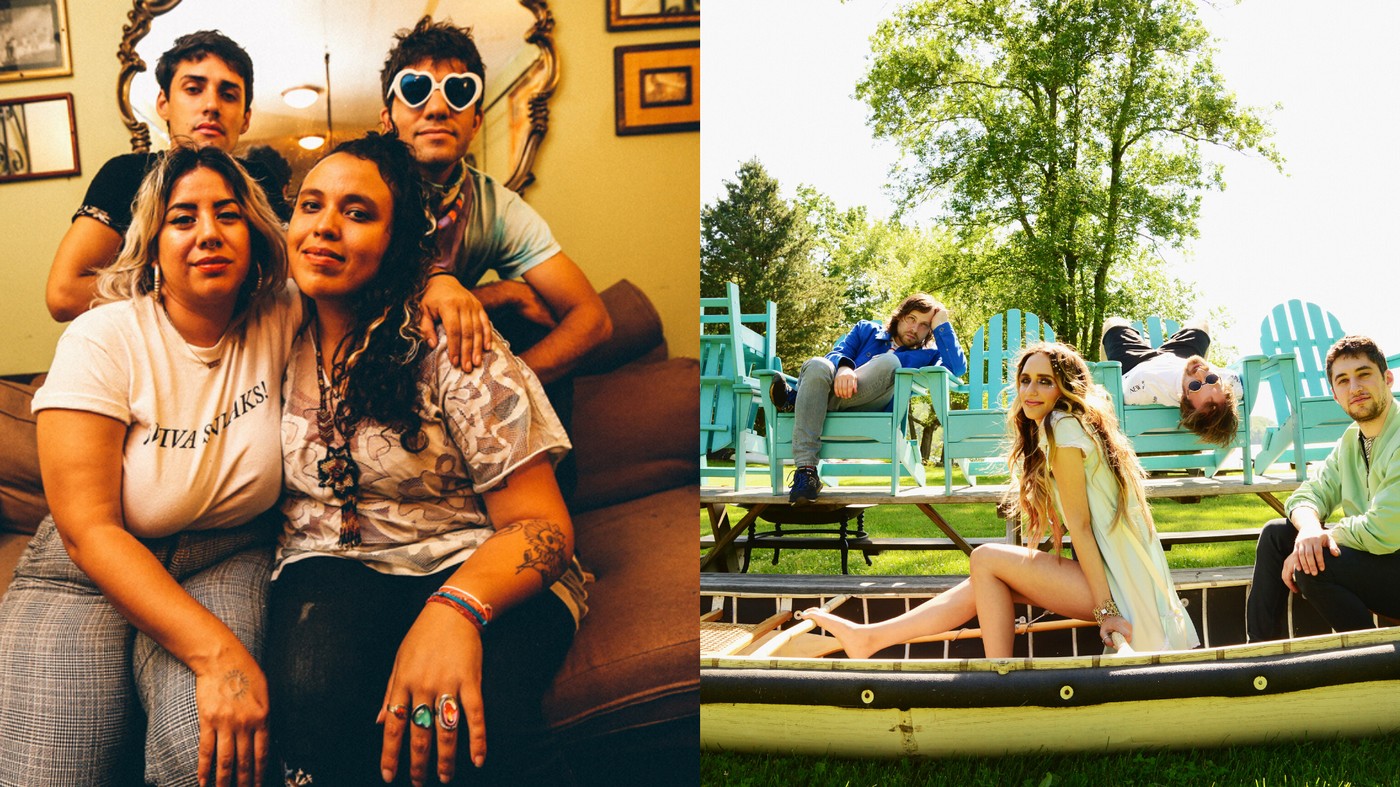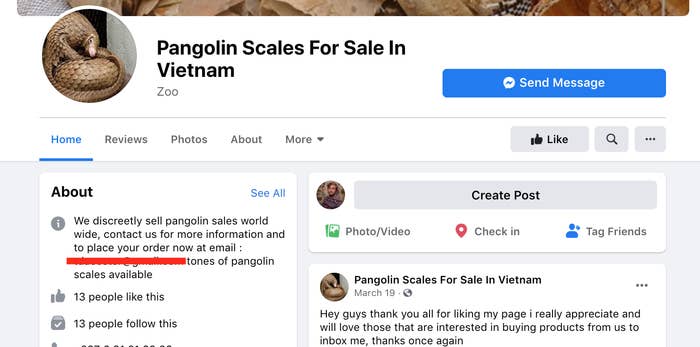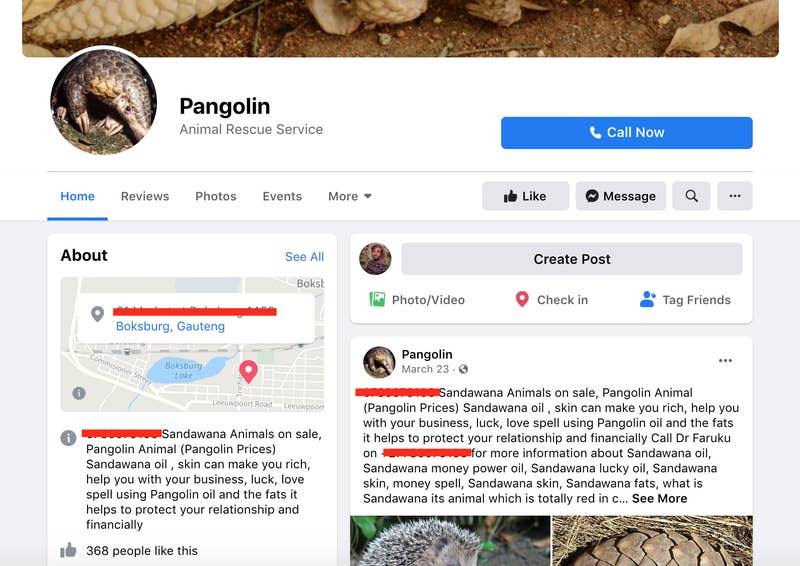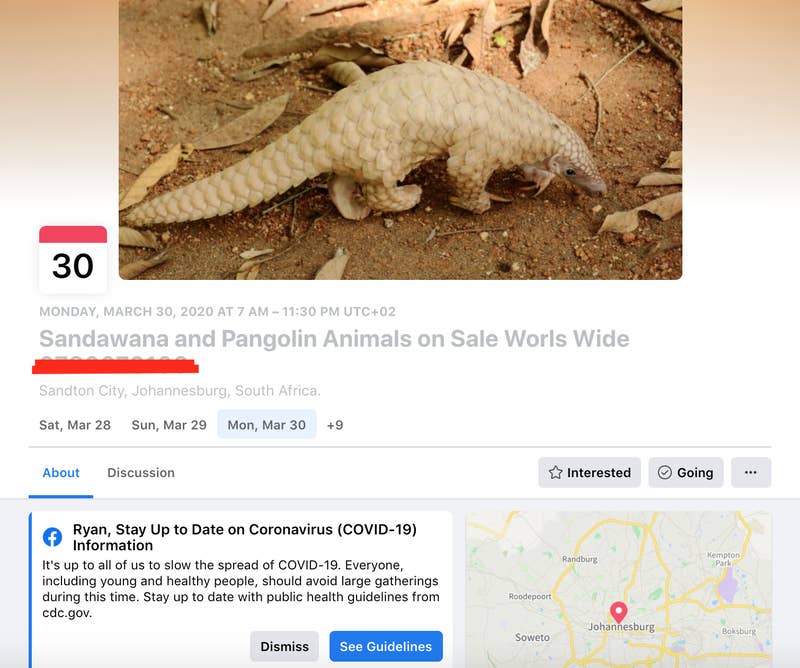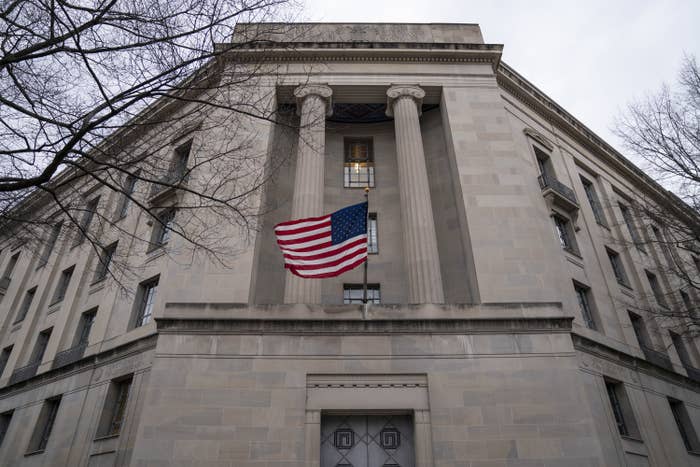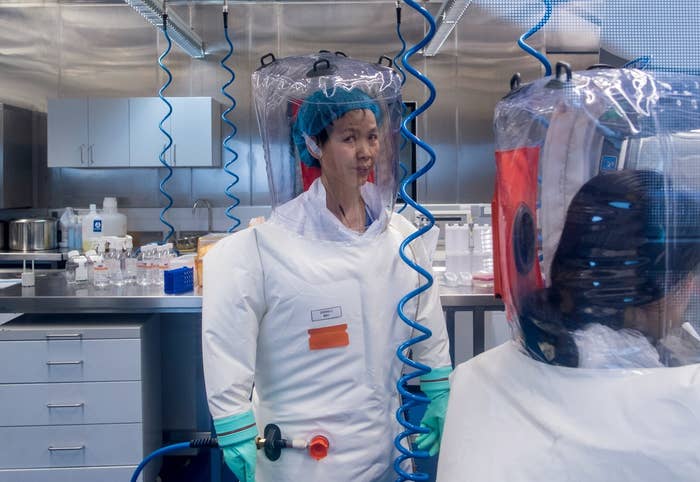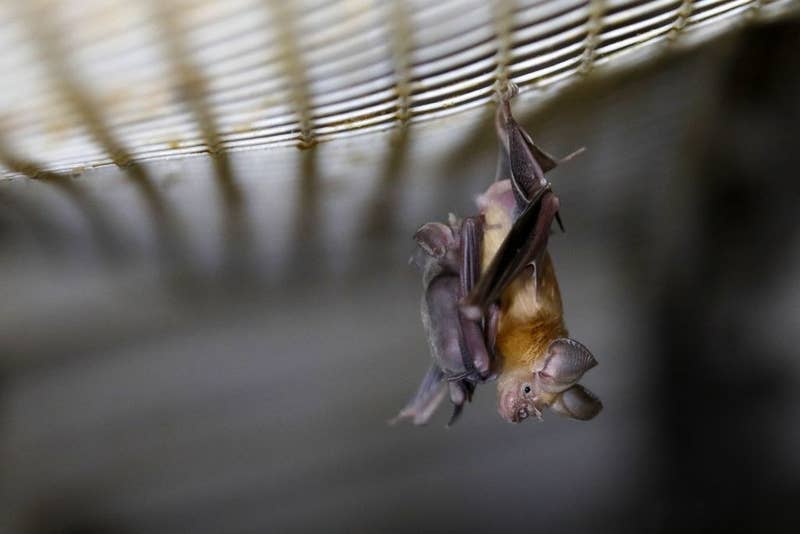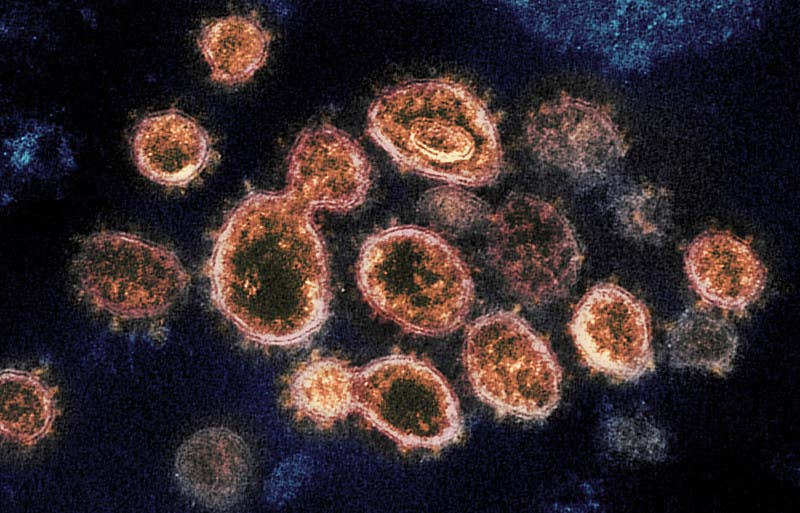Why Gen Z Is Turning to Socialism
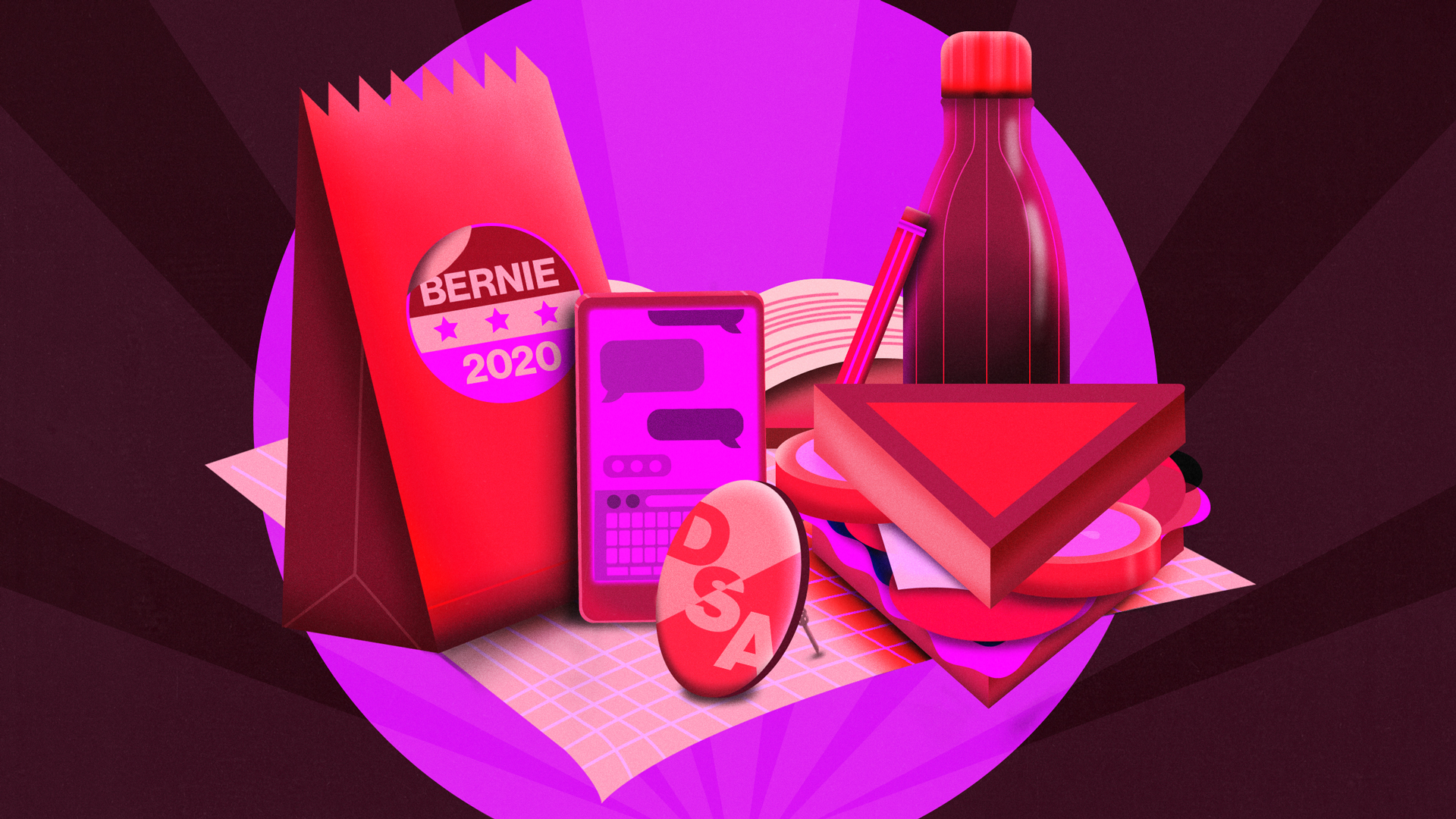
"It's much more stigmatized to say you're a capitalist, in my experience."
By Marie Solis; illustrated by Hunter French May 4 2020
Thomas Burriel was 13 when he first learned about democratic socialism. It happened on Instagram.
Burriel was scrolling through his feed one day in February after school. At the time—winter 2018—he was still attending Linus Pauling, the middle school in his hometown of Corvallis, which is about two hours outside of Portland, Oregon. Linus Pauling offers a “Human Rights Club” and an “Equal Rights/Safer Space Club” to discuss social justice and world events, but Burriel wasn’t involved in them, or in any political clubs at school. And while he identified as a Democrat, he admitted that he had also sympathized with some Republican talking points “out of ignorance.”
But then Instagram’s algorithm suggested Burriel follow @chs_socialists, the page for Corvallis High School’s Young Democratic Socialists of America chapter. Burriel remembers @chs_socialists only having a couple of posts up at the time, and though he had no mutual followers with the account, it sparked his interest: What exactly was democratic socialism?
“When I looked into the problems, I realized the best solution was democratic socialism.”
Burriel googled the term, and after reading a summary on Wikipedia, he found himself on the official Democratic Socialists of America website, and then on the page for the national YDSA, the youth-oriented arm of the organization. The more he read about the groups’ goals and core principles—which include platforms for Medicare for All, tuition-free college, and a Green New Deal—the more he liked the sound of democratic socialism. For Burriel, it was that simple: He agreed that health care was a human right, that politicians should take action on climate change, and that cost shouldn’t be a barrier to receiving a college education. Here was a political ideology that reflected all those things.
“I’ve also learned about a lot of these problems through Bernie Sanders’s [2020] campaign,” Burriel told me over the phone late last year. When we first spoke, Sanders was still trailing Joe Biden in the polls. “When I looked into the problems, I realized the best solution was democratic socialism.”
Burriel is part of a growing group of young people who say they hate capitalism. They’ve come of age amid the ruins of Obama-era liberalism, and their political icons are members of Congress like Sanders or New York Representative Alexandria Ocasio-Cortez. They’ve joined walkouts for gun violence and climate change, and are leading groups like the Sunrise Movement to call out corporations and complacent politicians. And now, as lawmakers scramble to respond to a pandemic that has sent the United States economy into free fall, they see obvious solutions to the crisis we’re in, like single-payer health care, universal basic income, and bailouts for everyday Americans, to name a few.
A2018 Gallup poll found that the majority of Americans ages 18-29—no matter their party affiliation—had a positive view of socialism. Americans in that age group were also far less likely than other age groups to view capitalism favorably. When VICE surveyed a group of its Gen Z readers in 2019, six in 10 predicted that the wealth gap would worsen in the next decade; 20 percent believed the United States would pivot to socialism by that point; and 57 percent identified socialism as an economic solution that would help combat violence against marginalized people.

These young people didn’t all come to anti-capitalist thought the same way. Some heard about democratic socialism for the first time by way of Sanders’ 2016 presidential campaign; some by way of his 2020 one. (In December, in the thick of the Democratic primary, the New York Times reported that Sanders was by far the most recognizable presidential candidate for Gen Z.) Others had their socialist consciousness raised by Ocasio-Cortez, who defeated a 10-term incumbent with a campaign platform in Sanders’ mold. Jacob Keller, a high school senior in New Jersey, told me he started developing socialist views much further back: Watching news coverage of Occupy Wall Street in 2011 “radicalized” him, he said. He was just 10 years old.
Like Burriel, many teenagers initially found an outlet for their burgeoning socialist ideals in their campus YDSA chapters. As a freshman in high school, Burriel is now a member of his—before the coronavirus outbreak, he attended meetings every Monday during his lunch period. (Now they take place more sporadically, over Zoom.) To Burriel, democratic socialism means taking power away from corporations and the elite, and returning it to working people. Sometimes, he uses those exact words. Other times, when he’s hanging out with his socialist friends, he’ll put it more bluntly: “Hating rich people,” Burriel told me when I asked what he talks about with other YDSA members. “It’s mostly stuff like ‘Screw Jeff Bezos.’ He has so much illegitimately acquired wealth. It’s incomprehensible how much wealth he has.”

Though there are about 80 YDSA chapters in total, in 2018 just a few of them were high school organizations. That’s changed over the last year: According to Amelia Blair-Smith, an at-large member of the the YDSA National Coordinating Committee, there are now more than 10, a bit of evidence that the massive boom in DSA membership that followed the 2016 election and Ocasio-Cortez’s historic upset reached not just millennials, but members of Gen Z as well.
“Even people as young as high schoolers are dealing with the realities of capitalism and realizing if they stand up and fight against that, they can secure a better future for the next generation.”
Blair-Smith, who, at 20, is herself a member of Gen Z, said many teenagers have discovered democratic socialism through climate activism and teachers’ strikes, two mass movements that have their origins in grade schools across the country. Not every student left these rallies and walkouts as card-carrying socialists, Blair-Smith said; but for some, they marked the beginning of anti-capitalist thinking: At the 2019 YDSA Winter Conference in February, she heard from a group of Denver, Colorado, teens who said they planned on starting a YDSA chapter at their high school after supporting the teachers striking in their city in 2018. In August, a teen went viral after posting a TikTok calling on students in Nevada’s Clark County school district to protest in solidarity with striking teachers.
“The strikes inspired a resistance to capitalism and solidarity with workers, who were their teachers,” Blair-Smith said. “Even people as young as high schoolers are dealing with the realities of capitalism and realizing if they stand up and fight against that, they can secure a better future for the next generation.”

Though students can no longer gather in person for large demonstrations or weekly meetings, YDSA chapters across the country are continuing to grow, in some cases not in spite of quarantine, but because of it. After attending YDSA’s annual convention in February, Keller, who leads the chapter at Montclair High School, got the idea to build a coalition of high school YDSA organizations, since many of the issues they address are specific to high school students, and the vast majority of YDSA is made up of college students. He began reaching out to chapters across the country, but things didn’t start picking up until schools closed and students went into isolation with their families.
“For the first couple weeks of quarantine, we didn’t get any school work really, so people were bored in their house and wanted something to do,” Keller explained. “It can feel very alienating to be a high schooler [during this time]—we’re not professionals, not all of us can work, and we’ve been told just to stay at home and do homework. But we still want to help, so this is a good way for us to show we want to help and use our voices for good.”
The coalition now has around 30 to 40 people in it, which is big for YDSA—most individual high school chapters have just a handful of loyal members—and they’ve been meeting weekly over Zoom. The group has attracted not only those who are already part of established YDSA chapters, but people who have only begun to get curious about democratic socialism as well. And some who, before, had only toyed with the idea of starting a chapter at their school, have begun the official process for starting one, according to Keller.
“The pandemic is a horrible thing, but it can be very radicalizing for people,” Keller said. “I don’t think we turned any Republicans into socialists, but we’ve definitely moved people who were liberal and didn’t know a lot about socialism to being excited about being organizers and activists in our group.”

Young people who belong to Gen Z, sometimes called “zoomers,” may be more predisposed to socialism than previous generations as a result of the way they see the world. Of the Gen Z readers who responded to VICE’s survey, 86 percent said they think the future will be characterized by worsening climate disasters; 68 percent said they believe economic problems will grow more pronounced; and 63 percent said they expect to see more global conflicts in their lifetimes. And they don’t expect the adults in charge to do anything to help— the majority of Gen Z respondents said they had “zero trust” in the country’s leadership.
“I have students who are worried about paying the debt they’re accruing as they sit in class because their parents are still paying off theirs,” said Stephanie Mudge, an associate professor of sociology at University of California, Davis who focuses on leftist politics.. “Socialism says: ‘We have a whole generation of people who have debt before they even hit the labor market—let’s cancel that.’ I imagine that feels like a sensible, clear, and reasonable response to a pretty obvious problem for a lot of young people.”

Mudge said it’s possible more young people will see socialist policies in this light as the coronavirus pandemic exposes the huge gaps between those who are able to work from home and protect themselves and those who must put themselves at risk to perform essential work.
“Many are probably watching their parents go out and expose themselves [to the virus]. Suddenly something like universal health care starts looking like a necessity.”
“Young people are likely going to be heavily conditioned by the experiences they see their parents going through in a time like this,” she continued. “Many are probably watching their parents go out and expose themselves [to the virus]. Suddenly something like universal health care starts looking like a necessity.”
Some teens have already been moving left of prominent democratic socialist politicians like Sanders, whether or not they call themselves socialists. David Oks, an 18-year-old who helped run former presidential candidate Mike Gravel’s 2020 campaign by turning the 89-year-old’s Twitter page into a socialist meme account, said he and many of the young people he knows support the decriminalization of sex work, a policy Sanders has only said is “something that should be considered.” And in the wake of Sanders’ suspended campaign, young people are already looking forward to the candidates who will follow in his footsteps and propose even bolder policies than he did.
Thomas Burriel was 13 when he first learned about democratic socialism. It happened on Instagram.
Burriel was scrolling through his feed one day in February after school. At the time—winter 2018—he was still attending Linus Pauling, the middle school in his hometown of Corvallis, which is about two hours outside of Portland, Oregon. Linus Pauling offers a “Human Rights Club” and an “Equal Rights/Safer Space Club” to discuss social justice and world events, but Burriel wasn’t involved in them, or in any political clubs at school. And while he identified as a Democrat, he admitted that he had also sympathized with some Republican talking points “out of ignorance.”
But then Instagram’s algorithm suggested Burriel follow @chs_socialists, the page for Corvallis High School’s Young Democratic Socialists of America chapter. Burriel remembers @chs_socialists only having a couple of posts up at the time, and though he had no mutual followers with the account, it sparked his interest: What exactly was democratic socialism?
“When I looked into the problems, I realized the best solution was democratic socialism.”
Burriel googled the term, and after reading a summary on Wikipedia, he found himself on the official Democratic Socialists of America website, and then on the page for the national YDSA, the youth-oriented arm of the organization. The more he read about the groups’ goals and core principles—which include platforms for Medicare for All, tuition-free college, and a Green New Deal—the more he liked the sound of democratic socialism. For Burriel, it was that simple: He agreed that health care was a human right, that politicians should take action on climate change, and that cost shouldn’t be a barrier to receiving a college education. Here was a political ideology that reflected all those things.
“I’ve also learned about a lot of these problems through Bernie Sanders’s [2020] campaign,” Burriel told me over the phone late last year. When we first spoke, Sanders was still trailing Joe Biden in the polls. “When I looked into the problems, I realized the best solution was democratic socialism.”

Burriel is part of a growing group of young people who say they hate capitalism. They’ve come of age amid the ruins of Obama-era liberalism, and their political icons are members of Congress like Sanders or New York Representative Alexandria Ocasio-Cortez. They’ve joined walkouts for gun violence and climate change, and are leading groups like the Sunrise Movement to call out corporations and complacent politicians. And now, as lawmakers scramble to respond to a pandemic that has sent the United States economy into free fall, they see obvious solutions to the crisis we’re in, like single-payer health care, universal basic income, and bailouts for everyday Americans, to name a few.
A2018 Gallup poll found that the majority of Americans ages 18-29—no matter their party affiliation—had a positive view of socialism. Americans in that age group were also far less likely than other age groups to view capitalism favorably. When VICE surveyed a group of its Gen Z readers in 2019, six in 10 predicted that the wealth gap would worsen in the next decade; 20 percent believed the United States would pivot to socialism by that point; and 57 percent identified socialism as an economic solution that would help combat violence against marginalized people.

These young people didn’t all come to anti-capitalist thought the same way. Some heard about democratic socialism for the first time by way of Sanders’ 2016 presidential campaign; some by way of his 2020 one. (In December, in the thick of the Democratic primary, the New York Times reported that Sanders was by far the most recognizable presidential candidate for Gen Z.) Others had their socialist consciousness raised by Ocasio-Cortez, who defeated a 10-term incumbent with a campaign platform in Sanders’ mold. Jacob Keller, a high school senior in New Jersey, told me he started developing socialist views much further back: Watching news coverage of Occupy Wall Street in 2011 “radicalized” him, he said. He was just 10 years old.
Like Burriel, many teenagers initially found an outlet for their burgeoning socialist ideals in their campus YDSA chapters. As a freshman in high school, Burriel is now a member of his—before the coronavirus outbreak, he attended meetings every Monday during his lunch period. (Now they take place more sporadically, over Zoom.) To Burriel, democratic socialism means taking power away from corporations and the elite, and returning it to working people. Sometimes, he uses those exact words. Other times, when he’s hanging out with his socialist friends, he’ll put it more bluntly: “Hating rich people,” Burriel told me when I asked what he talks about with other YDSA members. “It’s mostly stuff like ‘Screw Jeff Bezos.’ He has so much illegitimately acquired wealth. It’s incomprehensible how much wealth he has.”

Though there are about 80 YDSA chapters in total, in 2018 just a few of them were high school organizations. That’s changed over the last year: According to Amelia Blair-Smith, an at-large member of the the YDSA National Coordinating Committee, there are now more than 10, a bit of evidence that the massive boom in DSA membership that followed the 2016 election and Ocasio-Cortez’s historic upset reached not just millennials, but members of Gen Z as well.
“Even people as young as high schoolers are dealing with the realities of capitalism and realizing if they stand up and fight against that, they can secure a better future for the next generation.”
Blair-Smith, who, at 20, is herself a member of Gen Z, said many teenagers have discovered democratic socialism through climate activism and teachers’ strikes, two mass movements that have their origins in grade schools across the country. Not every student left these rallies and walkouts as card-carrying socialists, Blair-Smith said; but for some, they marked the beginning of anti-capitalist thinking: At the 2019 YDSA Winter Conference in February, she heard from a group of Denver, Colorado, teens who said they planned on starting a YDSA chapter at their high school after supporting the teachers striking in their city in 2018. In August, a teen went viral after posting a TikTok calling on students in Nevada’s Clark County school district to protest in solidarity with striking teachers.
“The strikes inspired a resistance to capitalism and solidarity with workers, who were their teachers,” Blair-Smith said. “Even people as young as high schoolers are dealing with the realities of capitalism and realizing if they stand up and fight against that, they can secure a better future for the next generation.”

Though students can no longer gather in person for large demonstrations or weekly meetings, YDSA chapters across the country are continuing to grow, in some cases not in spite of quarantine, but because of it. After attending YDSA’s annual convention in February, Keller, who leads the chapter at Montclair High School, got the idea to build a coalition of high school YDSA organizations, since many of the issues they address are specific to high school students, and the vast majority of YDSA is made up of college students. He began reaching out to chapters across the country, but things didn’t start picking up until schools closed and students went into isolation with their families.
“For the first couple weeks of quarantine, we didn’t get any school work really, so people were bored in their house and wanted something to do,” Keller explained. “It can feel very alienating to be a high schooler [during this time]—we’re not professionals, not all of us can work, and we’ve been told just to stay at home and do homework. But we still want to help, so this is a good way for us to show we want to help and use our voices for good.”
The coalition now has around 30 to 40 people in it, which is big for YDSA—most individual high school chapters have just a handful of loyal members—and they’ve been meeting weekly over Zoom. The group has attracted not only those who are already part of established YDSA chapters, but people who have only begun to get curious about democratic socialism as well. And some who, before, had only toyed with the idea of starting a chapter at their school, have begun the official process for starting one, according to Keller.
“The pandemic is a horrible thing, but it can be very radicalizing for people,” Keller said. “I don’t think we turned any Republicans into socialists, but we’ve definitely moved people who were liberal and didn’t know a lot about socialism to being excited about being organizers and activists in our group.”

Young people who belong to Gen Z, sometimes called “zoomers,” may be more predisposed to socialism than previous generations as a result of the way they see the world. Of the Gen Z readers who responded to VICE’s survey, 86 percent said they think the future will be characterized by worsening climate disasters; 68 percent said they believe economic problems will grow more pronounced; and 63 percent said they expect to see more global conflicts in their lifetimes. And they don’t expect the adults in charge to do anything to help— the majority of Gen Z respondents said they had “zero trust” in the country’s leadership.
“I have students who are worried about paying the debt they’re accruing as they sit in class because their parents are still paying off theirs,” said Stephanie Mudge, an associate professor of sociology at University of California, Davis who focuses on leftist politics.. “Socialism says: ‘We have a whole generation of people who have debt before they even hit the labor market—let’s cancel that.’ I imagine that feels like a sensible, clear, and reasonable response to a pretty obvious problem for a lot of young people.”

Mudge said it’s possible more young people will see socialist policies in this light as the coronavirus pandemic exposes the huge gaps between those who are able to work from home and protect themselves and those who must put themselves at risk to perform essential work.
“Many are probably watching their parents go out and expose themselves [to the virus]. Suddenly something like universal health care starts looking like a necessity.”
“Young people are likely going to be heavily conditioned by the experiences they see their parents going through in a time like this,” she continued. “Many are probably watching their parents go out and expose themselves [to the virus]. Suddenly something like universal health care starts looking like a necessity.”
Some teens have already been moving left of prominent democratic socialist politicians like Sanders, whether or not they call themselves socialists. David Oks, an 18-year-old who helped run former presidential candidate Mike Gravel’s 2020 campaign by turning the 89-year-old’s Twitter page into a socialist meme account, said he and many of the young people he knows support the decriminalization of sex work, a policy Sanders has only said is “something that should be considered.” And in the wake of Sanders’ suspended campaign, young people are already looking forward to the candidates who will follow in his footsteps and propose even bolder policies than he did.
“A lot of young people are interested in issues candidates don't touch: stuff that's seen as politically toxic like sex work decriminalization, but also things that candidates just don't think are important,” Oks said. “And a lot of young people who don't even see themselves as leftists think [the Green New Deal] is the most important issue in politics.”
In his social circles, these beliefs are almost taken for granted, Oks said. Among Gen Z "being solidly leftist is the norm," which means it's rare that he encounters any stigma toward democratic socialism. “It's much more stigmatized to say you're a capitalist, in my experience,” he added. “Since you look like a libertarian/TPUSA goofball.”
Still, there are some zoomers who continue to regard socialism with suspicion. Students’ experiences with this stigma were mixed, even when they attended the same school, and even when those schools were located in progressive pockets of the country. When Keller began petitioning to start a YDSA chapter at Montclair, he found everyone seemed “really open” to learning about democratic socialism. But his co-chair had a different read on their peers: Anahita Foroughi, a junior, said some students still harbored the bias against socialism “that’s been drilled into us since we were young, through the media or through our parents.” When she asked one close friend to attend a YDSA meeting with her, the friend declined, telling Foroughi that she worried it would become a problem if she decided to run for political office one day.

“A few people think socialism is really interesting and want to learn more, but generally people get surprised and then go silent,” she said, describing her classmates’ reaction to any discussion of socialist politics. “Then it becomes a little awkward because I don’t know if they’re onboard with it.”
At YDSA meetings, as well as in casual conversation, Keller tries his best to put socialism in terms his classmates can relate to. He talks about national issues like Medicare for All—one of the most popular programs in the country, he emphasized—as well as issues directly affecting students and the greater Montclair community. “I’ll say, ‘Hey, Montclair is very gentrified, we need housing justice,’” Keller explained. “And I’ll tell them, ‘Even if you don’t agree with all of what democratic socialism is, we’re fighting for certain issues we can all help with.’” One of these issues was bussing: Last year, the Montclair YDSA organized a campaign to help Black students who are still experiencing the effects of red-lining, and therefore must take public transit to get to school.
“I love Marx, but I don’t think you can hand a freshman The Communist Manifesto and expect them to read it—I mean I did, but maybe I’m an outlier,” Keller said. “We don’t need to dumb anything down for people, but we do need to put socialism in context for them. We can do that by talking about class struggle and tying it to climate change, to college tuition, and showing how it matters in their lives.”
The point is to meet other students where they are, and learn more about socialist organizing together. High school YDSA clubs are led by students who themselves are still in the very early stages of socialist education, and many of these students have different ideas of what socialism means and how to practice it, even if they agree on its basic principles.
Socialism may boil down to a mood, or a structure of feeling, rather than a politics to adopt wholesale, for members of Gen Z.
Ella Morton, who is Keller’s co-chair on the YDSA coalition and the head of Corvallis High School’s YDSA chapter, said she doesn’t strongly identify with the “economic part” of democratic socialism—that is, the “hardcore theory element of socialism,” she explained to me on the phone one evening, on the day she took the PSAT for the first time. Morton said that while she knows socialism is, at its core, about a struggle for economic justice, what resonates for her most about the political ideology is its emphasis on community bonds. She also told me she’s averse to reading Marx, whom she believes would “ruin democratic socialism” for her.
In his social circles, these beliefs are almost taken for granted, Oks said. Among Gen Z "being solidly leftist is the norm," which means it's rare that he encounters any stigma toward democratic socialism. “It's much more stigmatized to say you're a capitalist, in my experience,” he added. “Since you look like a libertarian/TPUSA goofball.”
Still, there are some zoomers who continue to regard socialism with suspicion. Students’ experiences with this stigma were mixed, even when they attended the same school, and even when those schools were located in progressive pockets of the country. When Keller began petitioning to start a YDSA chapter at Montclair, he found everyone seemed “really open” to learning about democratic socialism. But his co-chair had a different read on their peers: Anahita Foroughi, a junior, said some students still harbored the bias against socialism “that’s been drilled into us since we were young, through the media or through our parents.” When she asked one close friend to attend a YDSA meeting with her, the friend declined, telling Foroughi that she worried it would become a problem if she decided to run for political office one day.

“A few people think socialism is really interesting and want to learn more, but generally people get surprised and then go silent,” she said, describing her classmates’ reaction to any discussion of socialist politics. “Then it becomes a little awkward because I don’t know if they’re onboard with it.”
At YDSA meetings, as well as in casual conversation, Keller tries his best to put socialism in terms his classmates can relate to. He talks about national issues like Medicare for All—one of the most popular programs in the country, he emphasized—as well as issues directly affecting students and the greater Montclair community. “I’ll say, ‘Hey, Montclair is very gentrified, we need housing justice,’” Keller explained. “And I’ll tell them, ‘Even if you don’t agree with all of what democratic socialism is, we’re fighting for certain issues we can all help with.’” One of these issues was bussing: Last year, the Montclair YDSA organized a campaign to help Black students who are still experiencing the effects of red-lining, and therefore must take public transit to get to school.
“I love Marx, but I don’t think you can hand a freshman The Communist Manifesto and expect them to read it—I mean I did, but maybe I’m an outlier,” Keller said. “We don’t need to dumb anything down for people, but we do need to put socialism in context for them. We can do that by talking about class struggle and tying it to climate change, to college tuition, and showing how it matters in their lives.”
The point is to meet other students where they are, and learn more about socialist organizing together. High school YDSA clubs are led by students who themselves are still in the very early stages of socialist education, and many of these students have different ideas of what socialism means and how to practice it, even if they agree on its basic principles.
Socialism may boil down to a mood, or a structure of feeling, rather than a politics to adopt wholesale, for members of Gen Z.
Ella Morton, who is Keller’s co-chair on the YDSA coalition and the head of Corvallis High School’s YDSA chapter, said she doesn’t strongly identify with the “economic part” of democratic socialism—that is, the “hardcore theory element of socialism,” she explained to me on the phone one evening, on the day she took the PSAT for the first time. Morton said that while she knows socialism is, at its core, about a struggle for economic justice, what resonates for her most about the political ideology is its emphasis on community bonds. She also told me she’s averse to reading Marx, whom she believes would “ruin democratic socialism” for her.
“It’s a lot of white guys who are Marxist socialists,” Morton said. “If I wanted that type of socialism, I would follow Bernie Sanders.” (At the time, Morton supported Massachusetts Senator Elizabeth Warren for president.)
Socialism may boil down to a mood, or a structure of feeling, rather than a politics to adopt wholesale, for members of Gen Z. Though they might hold inconsistent positions—as so many of us do—zoomers grasp the core essence of socialism, and are finding that it provides them with an intuitive way of making sense of the world. Viewed in this light, a 15-year-old who is skeptical of Marx and Sanders but identifies with the socialist label isn’t necessarily evidence of the ideology’s dilution: Instead, she might be proof that socialism has become synonymous with a love of justice, and a desire for positive social change.
Many zoomers may still find individual socialist policies more attractive than the broader socialist politics that lie underneath. And many more will find little attractive about either. But students who belong to the country’s burgeoning YDSA chapters aren’t demanding their peers’ political purity—mostly, they’re asking their classmates to keep an open mind, and learn alongside them.
“What we want is workers to have power and for everyone to be able to live a healthy life without fear of lack of medical care or housing,” Keller said. “Socialism is very popular if you break it down.”




